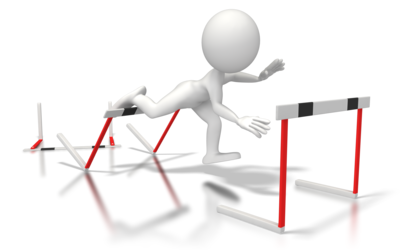A few months ago I was invited to write a guest post for Education Transformations. Their vision is “We envision a world where all schools are emotionally and physically safe, collaborative, creative, and relevant places to learn and teach.” I chose to write about mistakes in the classroom.
Here’s what I wrote:
Making Mistakes Represents a Critical Element of Comprehensive Learning —Let Students Make Mistakes
Can you think of a time in school when you made a mistake? Was it a learning experience or just humiliating? The title of this blog may make some of you cringe, recalling some of your biggest mistakes in your own classroom experiences. Allowing for mistakes to be made is much different from how many of us were taught growing up. A friend once told me of a horrifying memory in 5th grade when she raised her hand to answer a question, incorrectly, and had to suffer the embarrassing laughter of her classmates. She remains fearful of raising her hand in a class-like setting to this day. Mistakes, handled improperly, can be scarring.
The flip side is that mistakes can also, should also, be opportunities to strengthen and empower students. When I say mistakes, I of course don’t mean letting them get the answer on a math problem wrong and telling them “good job”. Give your students a non-judgmental forum for trial and error.
Making an attempt at active participation should always be encouraged, and it is in the students’ trying where much of the learning happens. Let them feel safe and confident enough to leap knowing they may indeed fall. You’ll be surprised at how much student engagement and interaction will soar once they realize that nobody is going to laugh or be angry with them, including the teacher, if they get the answer incorrect.
How to make your classroom a safe-zone for making mistakes:
- Teach your class that mistakes are part of learning. (You may wish to reference one of Thomas A. Edison’s more famous quotes: “I have not failed. I’ve just found 10,000 ways that won’t work.” And you may also try referencing how some of our most significant discoveries came about through mistakes.)
- Laughing or ridiculing an incorrect answer is never acceptable. Start this culture of tolerance and understanding as soon as possible. What a great way to start fresh in 2015.
- Give students the benefit of the doubt. If they make a mistake assume it was an honest mistake.
- Redirect the student, not with anger or frustration, but with understanding and encouragement and a calm tone in your voice. Lead them towards the correct answer through positivity, providing reassuring reminders that the bravest students can sometimes make the biggest mistakes during the learning process.
Positive example response to a student’s incorrect answer:
“You’re on the right track, who can help him/her out?”
Negative example response to a student’s incorrect answer:
“Nope, that’s wrong. We went over this yesterday!”
Use your words to lift your students and promote confidence. Be aware of negative reinforcement, or worse, completely silencing students through fear of incorrect answers in the future.
Lifting: “You’re all so smart. I know somebody can figure this out. Think about the question.”
Silencing: “Really? Not one person can answer this question? We spent twenty minutes on this yesterday! Were you not paying attention?”
What are the long-term effects of creating a safe-zone for mistakes in the classroom?
We always have to remember that in our classroom, we are teaching the whole-child, not just the class curriculum and lesson content. By using mistakes as learning opportunities, teachers are able to arrive at the same correct answers while achieving a more comprehensive and enduring learning process. We build confidence, self-esteem, and self-worth when we redirect and encourage rather than shut down our students. Our classrooms transform into a tight-knit community of learners that support each other academically. Mistakes are part of the process — let’s learn from them with confidence!
Your turn: What mistake have you made in the classroom as a teacher that you learned from?
Serena Pariser is guest blogging for Education Transformations. She is currently in her tenth year teaching. She resides in beautiful San Diego and teaches 8th grade English. She has been a teacher coach, curriculum designer, workshop presenter, and has held leadership positions in school settings. In her fourth year teaching, she was recognized as Teacher of the Year for her school. She is an avid blogger and is working on publishing her upcoming book on teaching practices that work. Stay connected for fresh updates and powerful new blog posts. When you find helpful content here, please share: www.serenapariser.com.



Recent Comments